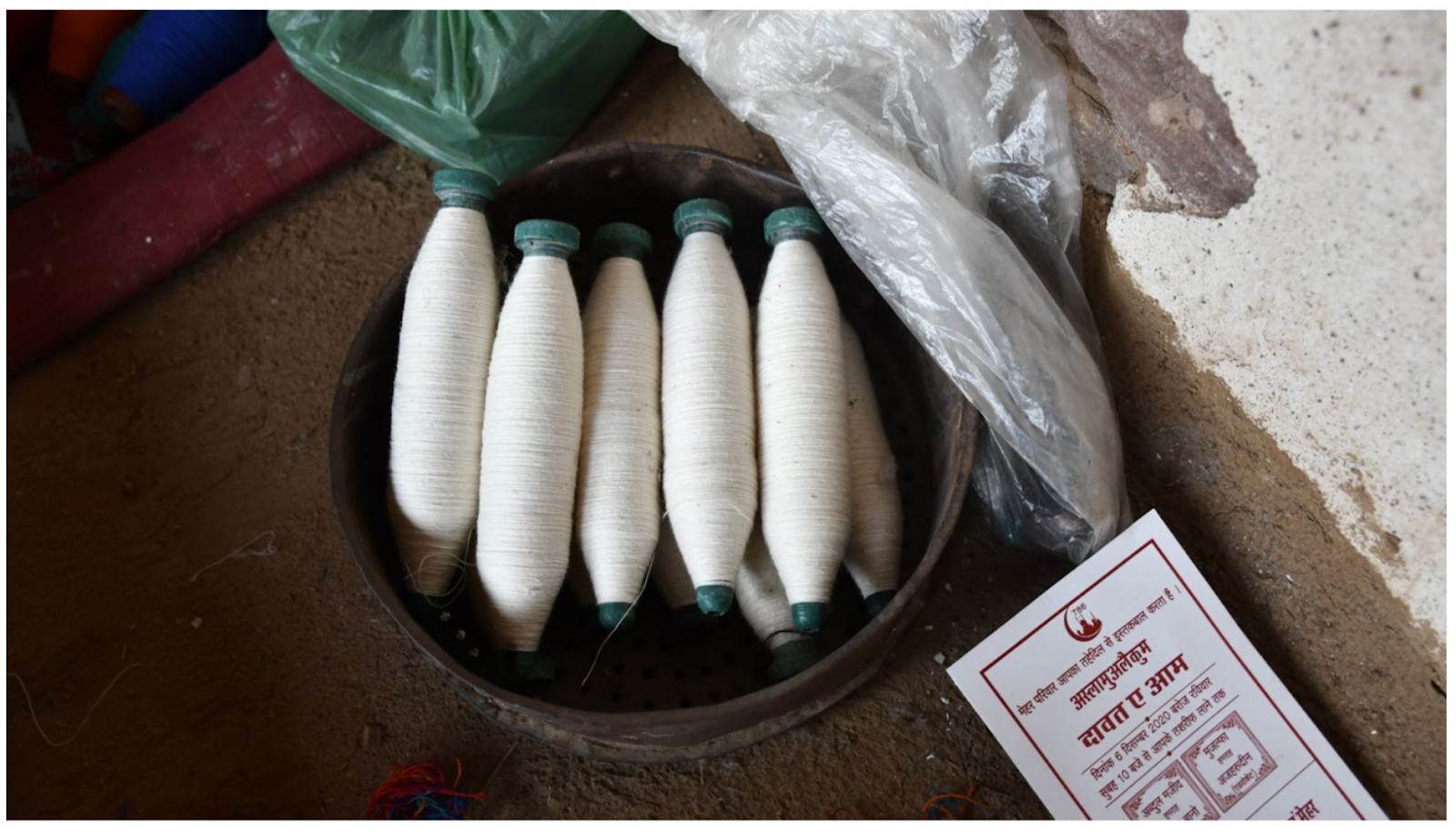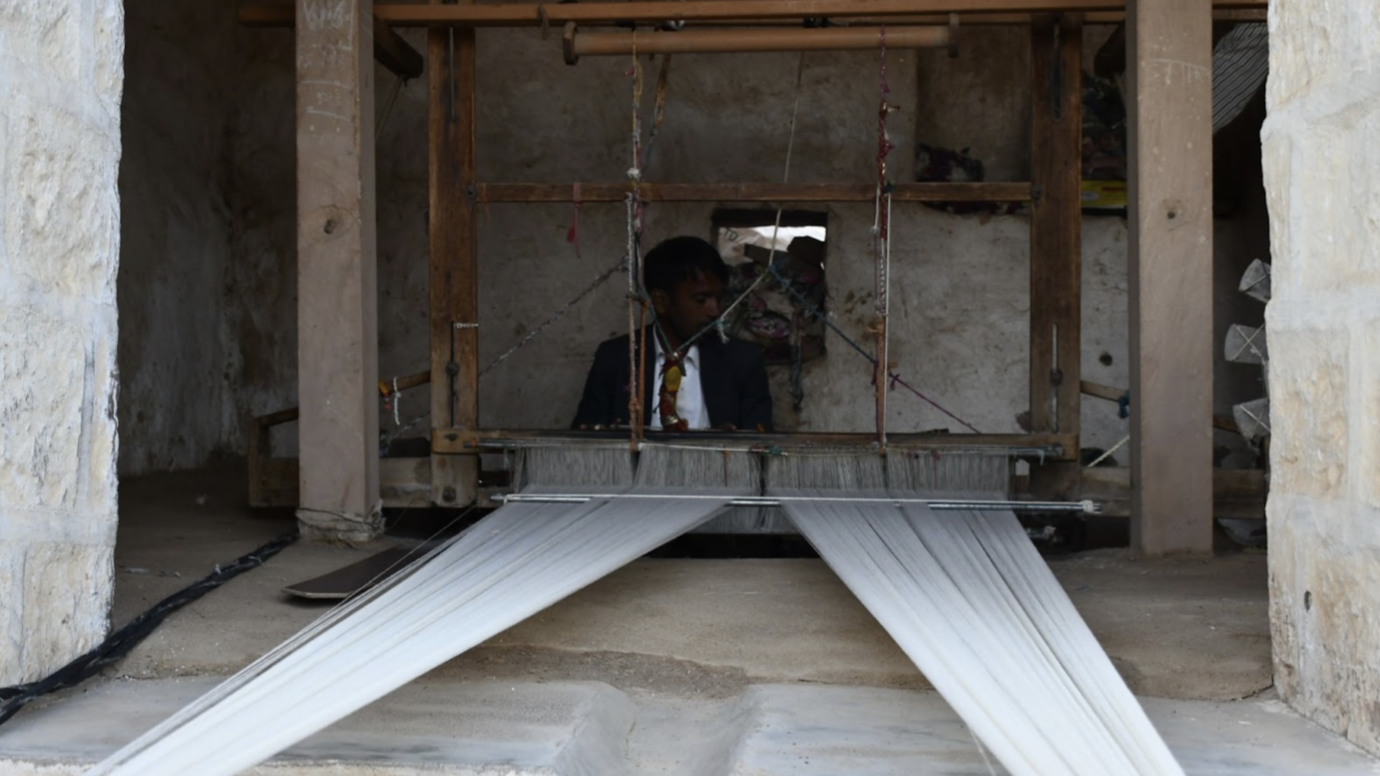WHAT IS TRADITIONAL LOOMS OF INDIA
Traditional looms of India.
The Hanloom Weaving Technique?
It is an old method of textile production, In which human resources thoroughly do the weaving without the use of any electricity.
The Weaving is performed in PIT LOOM On HANDLOOM :-
The weaving is performed in PIT LOOM or HANDLOOM; These are the wooden machines assembled in a specific order to interlace two sets of yarns.
WHICH COUNTRY IS FAMOUS FOR HANDLOOM PRODUCTS?
India is a country with 85 % of the world's handmade products in different sectors, especially textiles. The land being so diverse, have different varieties of crafts in the handloom industry.
The Indian handmade textile is as vast as the ocean covering over 30 textile handicrafts spread across 29 states. Each of the states is famous for some unique & specific crafts.
TURKISH HANDLOOM (FOR RUGS):-
The weaving of Anatolia rugs began with the arrival of Turkish tribes from Central Asia, who settled in the region. Therefore, Anatolian rugs form a tribal branch of Turkey.
The designs, which included twisted branches, leaves, and flowers such as tulips, carnations, and hyacinths, were woven in a natural style and established the basic structure of the rug. This style continued in other regions and can be seen in Turkish rugs today.
There are four basic Turkish rugs, Hali, KILIM, CICIM , and SUMAK.
The Hali is a thick rug, but the other three are flat yarns made without knots. They are ofte used as wall hangings and small rugs.
WHAT ARE THE BEST LOOMS FOR BEGINNER?
Frame loom is best for very beginners who want to learn to weave. It helps create tapestries. You can make different sizes of tapestries using larger frames.
There are other types of looms for beginners; like a rigid-heddle loom, the weaver can use thin threads and weave intricate patterns using shuttle and weaving techniques. Rigid-heddle looms are portable, and it can be used with or without a stand.
Another type of loom for beginners is the inkle loom. It has very limited use as it is only used to weave an narrow-width fabric. It is also a portable loom and easy to handle. you can use it for making belts or straps.
Extra-warp is a weaving technique where extra warp threads are inserted to create embroidery-like motifs on the base weaving fabric. It gives a very similar look to embroidery, but it can only produce more geometrical patterns.
It is traditionally done in many countries around the world. One of which is very famous in India is called pattu weaving.
DEFINATION OF PATTU WEAVING:-
“Pattu” word is derived from patti, which means a narrow strip of cloth. It is an extra-warping technique of weaving. Mainly shawls, durries, and blankets were woven traditionally but from approx. Thirty years a variety of products like cushion covers and other apparel clothing.
Traditionally, Pattu is called a woolen blanket weaved by the Meghwal community of weavers in the regions of Barmer, Jaisalmer, Jodhpur, and Bikaner Rajasthan in India.
MATERIAL USED IN PATTU- EXTRA WARP WEAVING:-
DYES:-
Traditionally, they used to use natural dyes to color the threads in the early days. Still, because of the wide variety of demand & to give competition to changing market, Vat dyes and Sulphur dyes are also used nowadays. The colors used in the Pattu are very bright. These dyes is easily buyed from market.
The material required to make a Pattu masterpiece was traditionally wool. Pattu was warm apparel earlier, which was given as a dowry or gift at the wedding. But adapting to the modern world, to achieve more variety of designs and make its use throughout any point of the year, 100% cotton yarn is now used.
PIT LOOM:-
The Pattu weaving is traditionally performed on Pit Looms, and a variety of different procedures are created and followed through the interlocking techniques and extra weft figuring.
SHUTTLE (NAAL):-
The Shuttle is used in the weaving process so that the thread can be carried back and forth on the long strands.
SHAFT (RASA-DORA):-
The metallic frame in the loom that holds the warp threads.
REED ATTACHED ONE( HATHA/SLAY):-
It is used to separate and place the warp strings, direct the shuttle movement across the weaving frame, and push the weft strands into place.
PADDLE:-
.It is used to pick the shafts up & down.
BOBBIN (GATTI):-
Bobbin contains a weft in a similar colour as the separate band, applied to weaving the restricted parts of bands.
SPINNING WHEEL (CHARKHA):-
Well it is used for spinning, but it also helps make small bobbin(Gatti).
DESGN:-
The Designs of Pattu are made with extremely bright colours. Talking about the motifs, these motifs seem to be inspired by things in the vicinity, such as household articles, birds, and animals. The motifs include Ulti Seedhi Chhatri, dhooly, minakda, bindiyaan, phool, komal, suman, manzil, igyarah tara, pahaad, patand, damru etc. Sometimes plain patties are embroidered to make them ornamental.
Design is illustrated on computer & the final design is printed on the paper & is given to the artisans for following it.
PROCESS OF PATTU WEAVING:-
Pattu Weaving has a very intricate method of weaving. Fabric is used in twill weave on pit loom, and numerous ways are produced through the extra warp techniques and additional weft figuring. In warping, different kinds of vertical warp bands in complementary colours are included on both sides of the loom. Then the method of interlocking is employed to obtain the pure colour.
The Pattu weaving is traditionally done on Pit Looms, and a variety of different procedures are created and followed through the interlocking techniques and extra weft figuring.
WARPING:-
: If we talk about distortion, different vertical warp threads, in contrast, shades are added to both sides of the loom. To get the purethe colour which is required, the proces of interlocking is employed.
There is a Weft in the bobbin as a separate band. Bobbin contains a weft in a similar colour as the independent band, applied to weaving the restricted parts of bands.
An extra calculated weft thread is carried around the embroidered part. That particular additional weft is done on a small stick, and the post is passed
between a minimum of two and a maximum of 12 picks. The artisan takes the warp thread and puts it in the extra weft thread. If we look at the time required for making a Pattu weave for a cushion cover of 16X16 inches, a speedy weaver will take one day to make two pieces. That is how the intricacy of work is.
TYPES OF PATTU WEAVE:
SIMPLE PATTU:-
Pattus are usually plain with coloured borders that run along the length to meet wider ones at both ends; there is no motif ornamentation in the body. It is one of the earliest pattu designs prevalent in western
Rajasthan. These are usually adorning the older men.
ARAVALI PATTU:-
Hiravali pattu has distinct sets of triple lines running warp-wise. It has its design evolved from plain pattu; it has borders similar to that of the plain pattu and does not have any motifs woven in its body.
CHATRI-KINGSIA PATTU:-
Chatri-Kangsia pattu is ornamental patterns with motifs in its body. These are also known as kashida pattu for the motifs are like embroidery in weaving. Chatri refers to motif with two pillars with
a dome, representative of a temple, and kangsia refers to damru(pellet-drum).
MALANI PATTU:
Malani pattu has total surface ornamentation -the pallus includes a fish motif. The pallu is followed by strips incorporated with motifs, which form the body of the pattu. These are from the Barmer region, formerly called ‘Malani’. It predominantly has chatter-kangsia motifs.
BHOJASRI PATTU:-
The body has the formation of motifs in a triangle form, and its borders have weft patterning bars running horizontally. These are popularly made in the Jaisalmer region.
LUNKER PATTU:-
Lunkar is a red-coloured (locally called raata colour) pattu. It is used by women and is smaller compared to other traditional pattus. It has standard weft patterning bars on its borders
BADRI PATTU:-
Bardi has a chequered pattern. Traditionally it was in black and white; these days, it is available in different colour combinations. Its warp-wise borders are plain, whereas weft-wise edges are decorated with rib stripes in bright colours.
PRODUCTS:-
Pattu weaving forms a key component of their visual culture. It is executed on products that were earlier worn or given during marriage and on dowry objects, but now is a contemporary artwork, words and given irrespective of the auspicious occasions.
The products made with Pattu Weaving are Sarees, blouses, kurtas, salwars, cushion covers, galeeche, decorative rugs etc.
Ref:-https://ruralhandmade.com



















Comments
Post a Comment